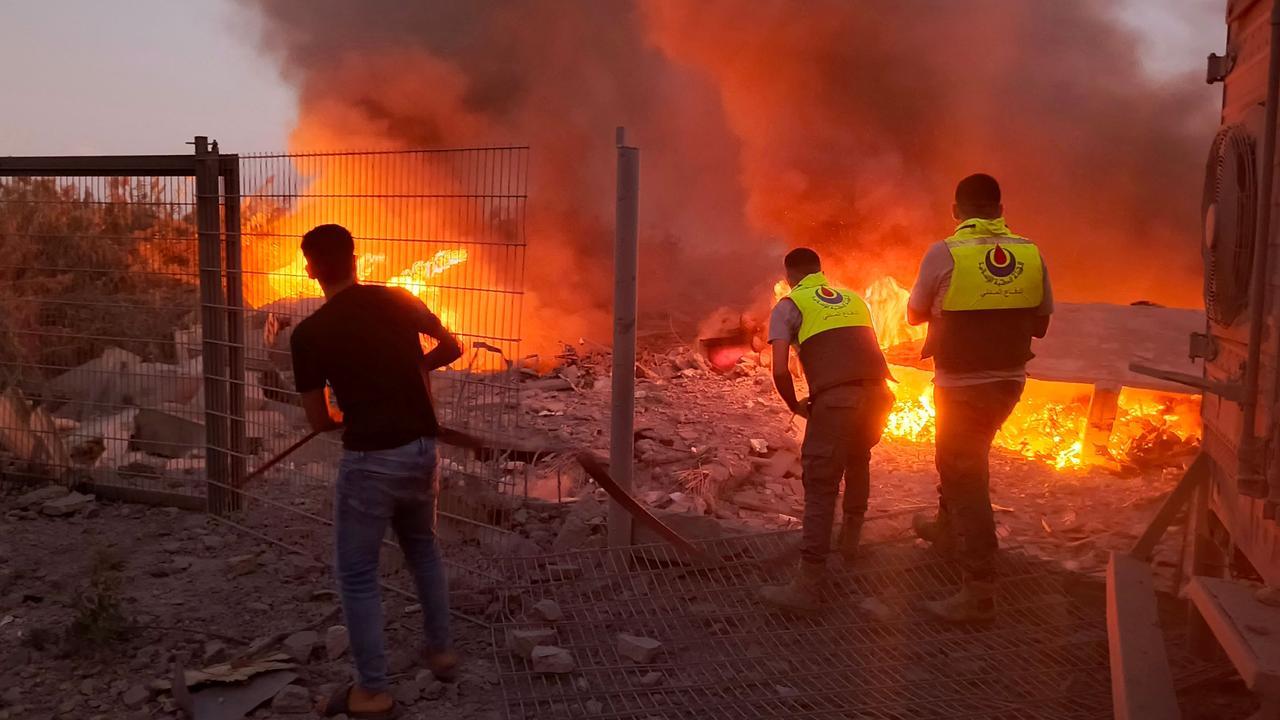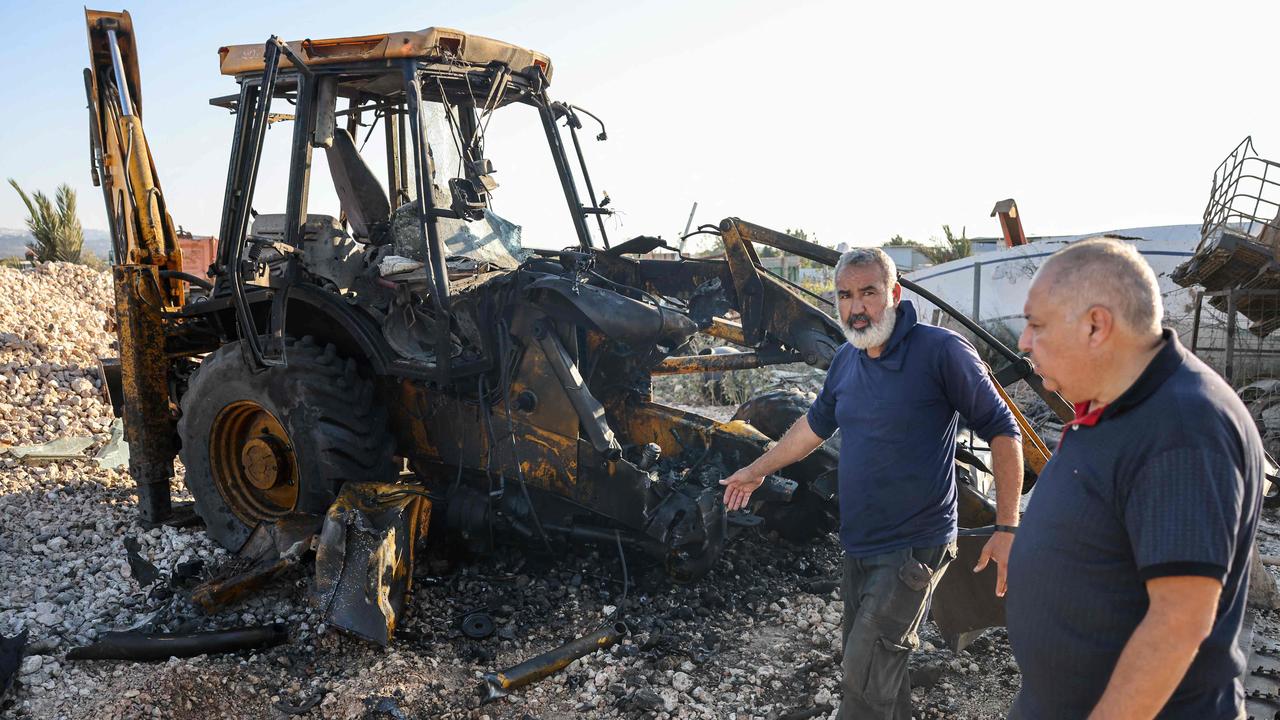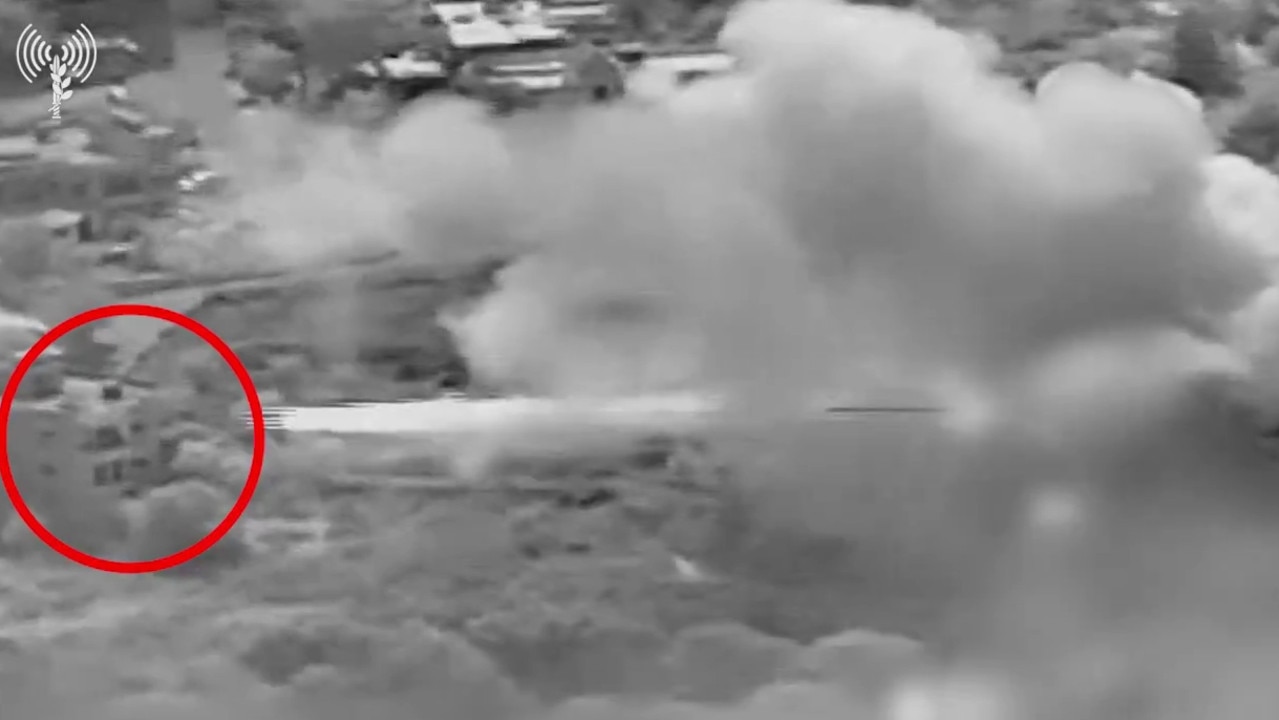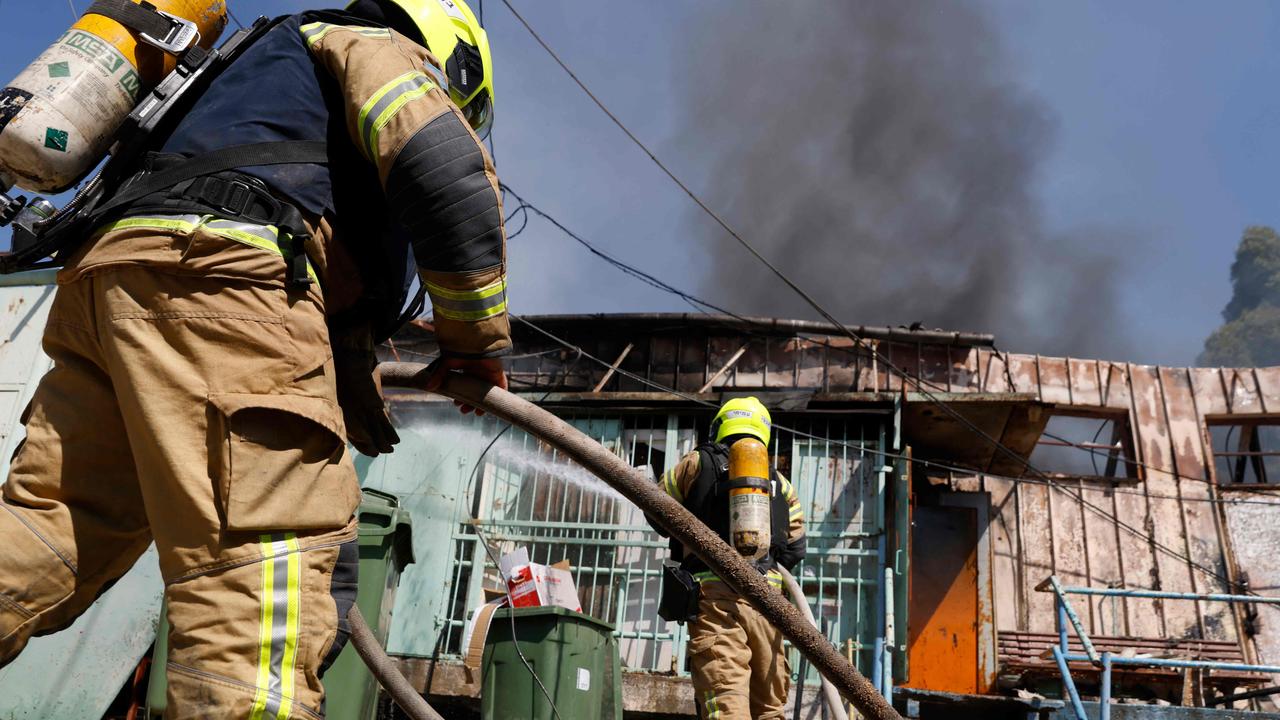How battled-hardened Hezbollah is luring Israel into a ‘killing zone’
With a huge weapons arsenal and tunnel network stretching hundreds of miles in southern Lebanon, Hezbollah is gearing up for what it calls a ‘historic opportunity’.
In the final days of Lebanon’s war in the summer of 2006, the smouldering remains of heavily-armed Israeli Merkava tanks – considered among the best in the world – became a potent symbol across the region.
Hezbollah’s lightly-armed fighters had taken on military and technological superiority and emerged from the campaign weaker, yet undefeated. Nearly two decades later, both sides have studied and learnt from the war, fearing a repeat was inevitable.
Hezbollah, an Iran-backed Shia militia that formed in the 1980s in the chaos of civil war, has not only managed to rebuild its weapons arsenal over the last eight years, but has increased it exponentially.

It is now considered one of the most heavily-armed non-state militia groups in the world. Its army, for example, is tens of thousands strong, with estimates suggesting that it has more than 150,000 missiles and rockets of all types.
Israel, meanwhile, has spent years building up its intelligence picture of Hezbollah. The group, says Matthew Savill, the director of military sciences at the Royal United Services Institute (Rusi), is “unlikely to make the same mistake of underestimating them”.
IS A GROUND WAR INEVITABLE?
Explosive drones and heavy rockets with 1000kg warheads have pulverised Lebanese villages in recent days, killing hundreds of people and causing thousands to flee.
Yet there is only so much Israel can achieve from the air, especially when taking on small, easily transportable rocket launchers and when much of Hezbollah’s infrastructure is thought to be underground.

Some form of ground invasion is now seen as increasingly unavoidable – a move that Lebanon has warned would bring its UK-trained state armed forces to the fight and potentially many more military forces in the region.
Military analysts believe this would be “folly” because it would lead to the kind of asymmetric warfare involving unconventional strategies and tactics in which Hezbollah would have a military advantage.
Indeed, Hassan Nasrallah, the leader of Hezbollah, said last week that an Israeli invasion of southern Lebanon was not a threat but a “historic opportunity”.
“The security belt will turn into hell for your army if you decide to come to our land,” he warned. “You will face hundreds of those who were wounded ... as they have become even more determined.”
This was after pagers and walkie-talkies were turned into explosive devices, killing dozens of fighters and two children in an audacious attack blamed on the Israeli spy agency Mossad.
Alon Mizrahi, an Israeli Arab-Jewish analyst, said it was Hezbollah’s objective to “lure Israeli into the inferno of southern Lebanon – the most well-designed, massively armed and strategically set up theatre of guerilla warfare probably anywhere in this world”.
TERRAIN FAVOURS THE DEFENDER
With its rolling hills and valleys, southern Lebanon is particularly challenging for any invading army and favours any defender, especially one that has spent decades considering and fortifying the land.
Some Hezbollah positions have a clear view into a “killing zone” on a forward slope, explains Justin Crump, a former British Army officer who runs the risk intelligence company Sibylline.
Others are hiding inside caves and tunnels, with many of them designed to allow defenders to fire into the flanks or the rear of advancing forces.
Experts at the Alma Research and Education Centre, which focuses on the security challenges on Israel’s northern border, have assessed that the cumulative length of Hezbollah’s tunnel network in south Lebanon amounts to hundreds of miles.
Unlike Hamas’ tunnels inside Gaza, which were primarily used to smuggle goods and weapons to circumvent the blockade, Hezbollah’s exist for military tactical reasons.

Some are deemed to be “attack tunnels” that can be entered in vehicles and even medium-sized lorries, which lead from area to area.
Then there are tactical tunnels located close to villages which enable the militants to fight from underground. From here they can fire from tunnel shafts and jump back inside to rearm before emerging again.
In August, Hezbollah, proscribed as a terrorist organisation by the United States and the UK, produced a slickly-made video of its extensive tunnel network, showing fighters driving large lorries carrying missiles through well-lit underground roads.
“This was a message to the Israelis: We have barely scratched the surface of the type of damage we can inflict on you,” said Nicholas Blanford, an expert on Hezbollah and a fellow at the Atlantic Council, a think tank based in Washington DC, at the time.
GUERILLA TACTICS
Hezbollah has a range of state-like capabilities and a significant weapons arsenal to enable them to operate as an effective guerilla force.
Its forces primarily consist of light infantry which have been “trained and built for stealth, mobility and autonomy”, according to the US security think tank, the Centre for Strategic and International Studies (CSIS).
It has empowered its subordinates to make independent battlefield decisions based on a commander’s intent, a version of what the US calls “mission command”. In 2006, Hezbollah was able to set up a launch site, fire and disperse in less than 28 seconds, relying on prepositioned equipment, underground shelters and mountain bicycles to achieve such a small window of exposure – a tactic which has been improved since, researchers say.

If the IDF is forced into the more urbanised terrain, then Hezbollah’s fighters will be able to take advantage of concealed, fortified positions. Khatib said that it had always operated through “hit-and-run attacks” whereby two fighters would typically show up on a scooter, launch missiles, then flee.
They could do this from open land or from private property. She said that Hezbollah had frequently launched rockets from civilian areas and it saw all of southern Lebanon as “fair use” territory. Although Khatib noted this was different from using civilians as human shields.
“Hezbollah is usually secretive in the way it conducts its operations and using buildings in the middle of towns is not optimal. I would say the vast majority of its arsenal is not stored in civilian areas,” she added.
THE SHADOW HAND OF IRAN
Nasrallah once boasted that “as long as Iran has the money, Hezbollah has the money”, openly stating that its budget, including its weapons and rockets came from the Islamic Republic.
Hezbollah is believed to have received rockets, mid-range missiles, long-range missiles, ballistic missiles, drones and mines from Tehran.
If Israel launches a ground war they will likely face a huge conventional barrage of missiles. Some 10,000 of their missiles are believed to be long-range precision-guided ones of the sort that could wreak havoc on Israeli towns and cities.
In Hezbollah’s arsenal is the Fateh-110, an Iranian short-range road-mobile ballistic missile with a range of about 300km, more than sufficient to reach Tel Aviv.

The murky transfer of weapons has been watched and analysed by British pilots flying Typhoons over Iraq and Syria, with the Times revealing last year how the UK was spying on Iranian-backed militia believed to be smuggling weapons through Syria to Hezbollah and its ally Hamas.
It is thought likely that Tehran would resupply Hezbollah quickly if it was deemed necessary.
The group has also received more capable anti-tank weaponry than it had the last time it faced Israel in combat in southern Lebanon.
For a ground war involving Israeli tanks, Hezbollah has a range of weapons at its disposal, including unguided rocket-propelled grenade launchers (the same type used to devastating effect in 2006) and the AT-14 Kornet.
Likely to be Hezbollah’s longest-range anti-tank guided missile, the AT-14 Kornet is a laser-guided weapon developed by Russia in the 1990s and has an effective range of about 5km while carrying an anti-armour or bunker-busting thermobaric warhead.
According to CSIS, it can penetrate armour up to 1200mm thick and has thermal-imaging capability for night warfare as well as tracking heat signatures.

Hezbollah is also estimated to have hundreds of Iran and Syria-supplied AT-3s, a wire-guided anti-tank guided missile with a range of up to 3km. The Iranian variant, known as Raad, can penetrate armour up to 400mm thick.
“They have a firepower output that would in some respects put parts of the British Army to shame,” Savill said, adding that it could deploy a 2500-strong better-equipped special operations unit called the Radwan Force which specialised in cross-border infiltration.
Many of Hezbollah’s fighters are also battle-hardened, having spent time in Syria during the civil war, fighting alongside President Assad’s troops to eliminate the opposition as well as Islamic State. It was there that video obtained by Reuters allegedly showed Hezbollah using Iran’s Karrar armed drones to destroy ISIS targets.
Now researchers say Hezbollah’s armed drone capabilities are considered among the most advanced of any militia groups in the world.
More Coverage
Originally published as How battled-hardened Hezbollah is luring Israel into a ‘killing zone’




